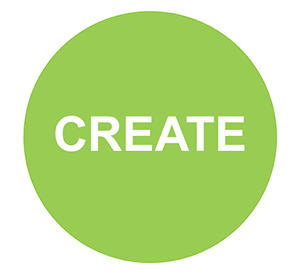Create: What can I do?
Young people develop their cognitive, creative, and artistic skills

“When I first came here, I came out of my comfort zone. It was amazing finding the skills that I have always had but not awakened before coming here. I have also learned the skills of time management, accountability, and communication.” – Shauna, Lynn, MA
Young people need places of support, in partnership with adult mentors, where they can design strategies for artistic action and pursue learning through multiple contexts. They further develop and showcase their skills in thinking critically and imaginatively about the world around them through high quality arts practices that build on their cultural legacies. They are able to gain artistic and expressive skills, as well as strengthen their abilities to innovate, think critically and solve problems. They also develop cognitive abilities and skills in conceptualization, prototyping, and communication.
Select Bibliography
Ginwright, S. A. (2010). Black youth rising: Activism and radical healing in urban America (p. 8). New York, NY: Teachers College Press.
Ginwright offers wisdom on the relationship between social justice and healing, both in community contexts and within individuals. Ginwright’s radical healing model points to the care of individuals and their relationships within community in order to build personal agency, hope, optimism, resilience and transformation. His vision for healing among individuals to build healthy, strong communities offers a new contextualization of the black collective consciousness and the meaning of social capital.
Katz, M. L. (2008). Growth in Motion: Supporting Young Women’s Embodied Identity and Cognitive Development through Dance after School. Afterschool Matters, 7, 12-22.
This study reports on an ethnographic investigation of two community dance organizations and examines the relationship between dance participation, positive identity development, and cognitive growth. The qualitative analysis in this article draws on focus group, interview, and observational data, as well as student reflections collected from 30 teenage girls included in the study. The author found that dance participation supports the transmission of knowledge through varied kinesthetic, visual, and linguistic channels. Dance participants have multiple entry points that allow them to access new knowledge, what the author and others in educational research refer to as embodied cognition. Embodied perspectives on cognition acknowledge the body and the body’s interactions with the surrounding environment as key influences on cognitive processing, and the community dance organizations the author studied used a combination of movement, observation, and discussion to help students extend their capabilities.
Love, B. L. (2016). Complex personhood of Hip Hop & the sensibilities of the culture that fosters knowledge of self & self-determination. Equity & Excellence in Education, 49(4), 414-427.
Bettina Love shares the contradictions and complexities of hip-hop culture and how a hip-hop pedagogy functions as a space of healing for youth. By focusing on emancipatory mindsets, an inclusive social agenda, and counterhegemonic teaching found in hip-hop, young people can create stories that tell their own experience and criticize the conditions that continue to oppress them.
Soep, E. (2006). Critique: Assessment and the production of learning. Teachers College Record, 108(4), 748-777.
The author of this study conducted a qualitative investigation of two community arts organizations that involve ethnically and economically diverse youth to understand how participation in artistic critique strengthens young people’s metacognition, a form of self-reflection that fuels independent learning and discovery. To support this inquiry, the author draws on 190 hours of program observation and discourse analyses of the student talk that occured during creative production at each site. In the critique sessions the author studied, students were responsible for articulating goals, developing skills for assessing their own work, and devising strategies for pursuing their own creative work. In contrast to formal school-based assessments, in which authority figures are responsible for evaluating student work, the author argues that these skills are critical for supporting empowered learning—since young people “need practice in the exercise of judgment” (p. 767) to develop the critical thinking skills that support lifelong learning.
Read full research review by CYD National Partnership’s Research and Evaluation Team
